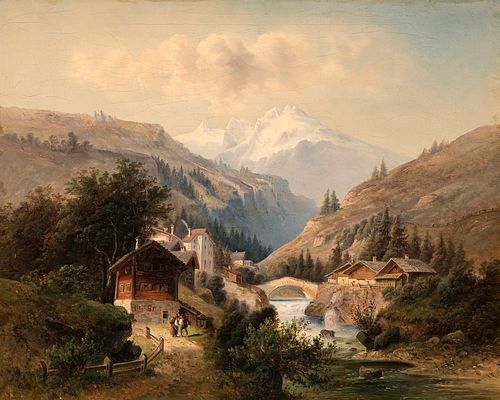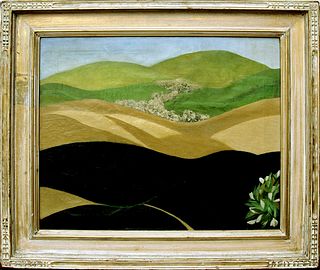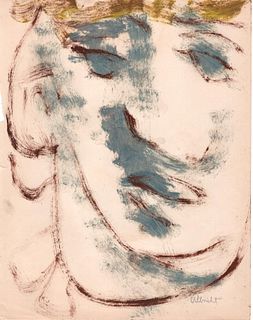Austrian school; second half of the 19th century. "View of the Alps". Oil on canvas.
Lot 15
About Seller
Setdart Auction House
Carrer Aragó 346
Barcelona
Spain
Setdart Subastas was born in 2004 and is currently the first online art auction in Spain with solidity, prestige and reliability guaranteed by our more than 60,000 users. Setdart has a young, dynamic and enterprising team ready to successfully manage the purchase and sale of art works through custom...Read more
Estimate:
EUR€1,500 - EUR€2,000
$1,612.90 - $2,150.54
Absentee vs Live bid
Two ways to bid:
- Leave a max absentee bid and the platform will bid on your behalf up to your maximum bid during the live auction.
- Bid live during the auction and your bids will be submitted real-time to the auctioneer.
Bid Increments
| Price | Bid Increment |
|---|---|
| EUR€0 | EUR€10 |
| EUR€200 | EUR€25 |
| EUR€500 | EUR€50 |
| EUR€1,000 | EUR€100 |
| EUR€3,000 | EUR€200 |
| EUR€5,000 | EUR€500 |
| EUR€10,000 | EUR€1,000 |
| EUR€20,000 | EUR€2,000 |
| EUR€50,000 | EUR€5,000 |
About Auction
By Setdart Auction House
Nov 10, 2021
Set Reminder
2021-11-10 08:00:00
2021-11-10 08:00:00
America/New_York
Bidsquare
Bidsquare : 19th & 20th Century paintings and Decorative Arts
https://www.bidsquare.com/auctions/setdart-auction-house/19th-20th-century-paintings-and-decorative-arts-7800
Setdart Auction House sofia@setdart.com
Setdart Auction House sofia@setdart.com
- Lot Description
Austrian school; second half of the 19th century. "View of the Alps". Oil on canvas. Presents damage to the paint and stuccoed wood frame. Signed in the lower right corner. Measurements: 54 x 68.5 cm; 84 x 98 cm (frame). In this work the artist collects a view of the Alps from the valley, using a frontal perspective that allows to see an urban scene and in the distance the mountains that form the Alps. In the foreground we can see several buildings structured around a river. It is in this area where you can see the presence of two characters that are located on the left side of the image. However, despite their presence, the peasants have small dimensions in relation to the magnificence of the landscape. This interest in the landscape and the realistic and epic aesthetics with which this image has been conceived, place the work in the context of romanticism. Romantic painters wanted the pure landscape, almost without figures or totally devoid of them, to achieve the heroic significance of history painting. They were based on the idea that human feeling and nature should be complementary, one reflected in the other. That is, the landscape should arouse emotion and transmit ideas. Thus, landscape painters like the author of this painting tried to express their feelings through the landscape, instead of imitating it. The romantic landscape had two main aspects: the dramatic, with turbulent and fantastic views, and the naturalistic, which emphasized images of a peaceful and serene nature, as in this case. It is this second conception that we see embodied in this work; the painter tries to communicate a religious reverence for the landscape, nature in its fullness, free from the industrial elements of modern life. In fact, the painter's use of light here conveys a dreamy atmosphere, inviting the viewer to meditate and contemplate himself in the landscape. The romantic landscape is nevertheless made up of manifestations of very different types and not comparable to each other; it does not affect all the national schools equally, remaining more faithful to the tradition in schools such as the French or Dutch. Thus, in this canvas we do not find the grandiose scenographies of the British and Germans, the rugged mountains or the monumental Gothic ruins. On the contrary, it is a landscape centered in the foreground, a space enclosed in the background by the mountains. The most typical elements of the romantic landscape, such as the hostile climate or the Gothic ruin, do not appear. Likewise, the typical romantic perspective is used, very marked, in abyss, which is complemented by a slight confusion of points of view. Despite these local differences, this romanticism contained in the form, we find however a clearly poetic content, which goes beyond the simple representation of the natural to capture nature as a reflection of the author's feelings.
- Shipping Info
-
In-house shipping available. Please inquire at admin@setdart.com.
-
- Buyer's Premium



 EUR
EUR CAD
CAD AUD
AUD GBP
GBP MXN
MXN HKD
HKD CNY
CNY MYR
MYR SEK
SEK SGD
SGD CHF
CHF THB
THB

















